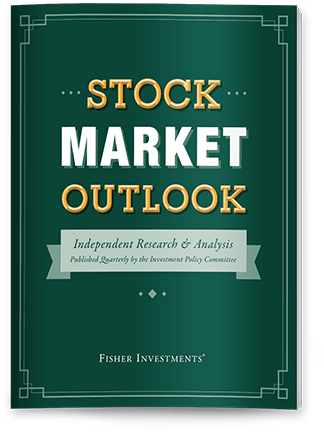Personal Wealth Management / Market Volatility
Four Bear Market Rules
“The 2% Rule says: US bear markets, top to bottom, decline irregularly but at an average rate of about 2% per month. If a decline exceeds that, you can soon count on a pullback and a better chance to get out.”
Understanding bear markets is an important factor to consider when investing in the stock market. But many investors don’t fully understand what bear markets are or how to recognize them, which can lead to emotionally driven trading decisions that can jeopardize investors meeting their long-term financial goals. We believe close monitoring of fundamental market factors is essential to identifying an approaching bear market – such as political, economic and sentiment market drivers. In our view, technical indicators alone are not sufficient to identify an impending bear market. However, our research shows bear markets rarely begin with a “bang”—they typically begin with a “whimper”: A rolling top over a longer period that lulls investors into a false sense of security.
Four rules can help identify this characteristic rolling top:
- The Two Percent Rule: A bear market typically declines by about 2% per month (Exhibit 1). Sometimes it declines by more than 2%, sometimes it’s less—but overall and on average, bear markets don’t often begin with the sharp, sudden drop some anticipate. If a bear does drop by more than 2% per month, there’s often a market counter-rally that can provide better opportunities for investors to sell. (Or, it might just a correction—for more, see the next section on corrections masquerading as bear markets.)
- Three Month Rule: A long-running Forbes columnist named Joe Goodman advised investors in the 1940s and 1950s to never call a market peak too soon. This rule advocates waiting three months after you suspect a peak has happened before calling a bear market. Rather than trying to guess when a market top might come, this rule ensures one has passed before taking defensive investment action. It provides a window of time to assess fundamental investment data, market action and possible bear market drivers.
- The Two-Thirds / One-Third Rule: About one-third of the stock market’s decline occurs in the first two-thirds of a bear’s duration, and about two-thirds of the decline occurs in the final one-third.
- 18-Month Rule: While bull market durations vary considerably, since 1946 the average bear market duration is only 14 months (Exhibit 2). Very few in modern history last fully two years or longer. If you’re engaging a defensive investment strategy, you probably shouldn’t bet on one lasting so long. The longer a bear market runs, the more likely you’re waiting too long to re-invest. If you remain bearish for longer than 18 months, you may miss out on the rocket-like market ride that is almost always the beginning of the next bull run. Missing that can be very costly for investors.

Exhibit 1 (left), Exhibit 2 (right)
Beware a Correction in Bear’s Clothing
It’s also critical not to call a bear market falsely. If the market is just going through a correction (a short, sentiment-driven downturn of -10% to -20%), we believe you’re better off riding through it and maintaining your portfolio. It is impossible to accurately and consistently time market corrections because of the way they behave. A correction can start for any reason or no reason. Corrections lack the causes and features of the Wall and the Wallop. Here are some potential signs you’re just witnessing a correction:
- There is a recent or ongoing regional geopolitical conflict, act of terrorism or natural disaster receiving “doomsday” coverage by the media. These events can trigger stock market volatility.
- The economy is fundamentally strong otherwise.
- The stock market downturn has been sudden, short and sharp off a recent relative high, as opposed to a rolling top.
Choosing to undertake a bear market investment strategy and go defensive should be rare and shouldn’t be done by gut feel or by your neighbor’s opinion. Exiting the market is among the biggest investment risks you can take—if you’re wrong and you have a need for portfolio growth, missing bull market returns can be extremely costly. Importantly, there are no hard and fast market rules for an investor to blindly follow. Rather, staying informed about current market drivers and understanding the causes and indicators of bear markets are important parts of maintaining a disciplined portfolio management process aimed at achieving your longer-term investment goals.

Where Might the Market Go Next?
Confidently tackle the market’s ups and downs with independent research and analysis that tells you where we think stocks are headed—and why.





